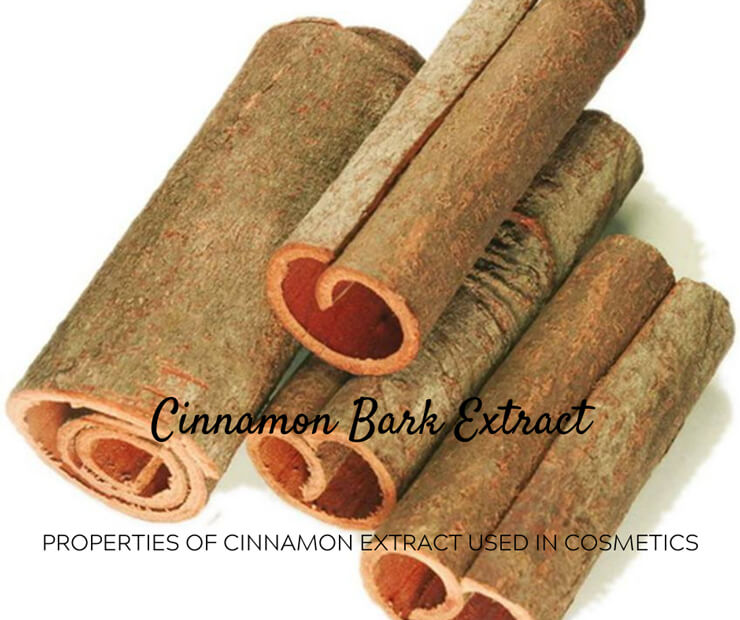Cinnamon Bark Extract Cinnamon is one of the most famous and ancient spices that humans have learned to use. Cinnamon is mentioned in written sources that are more than 5000 years old. The source of cinnamon is the evergreen cinnamon tree, which is widely cultivated in many countries in the tropical zone, especially in India, Indonesia, China, and the Asian island states.
Chinese medicine today, as in ancient times, recommends cinnamon bark extract for the treatment of cataracts, tuberculosis, urolithiasis, and even some types of tumors.
The healing properties of cinnamon bark extract are associated with its rich composition of bioactive substances – the extract contains vitamins C and E, PP, pantothenic acid, pyridoxine, magnesium, potassium, zinc, iron, calcium, phosphorus, and many other elements (sugars, alcohols, tannins, phytoncides).
Modern medicine is studying in detail the effect of cinnamon extract on lowering blood sugar levels and normalizing metabolism, as well as on its effectiveness in the treatment of skin and some neurological diseases.
Cosmetologists scrutinize the properties of cinnamon bark extract as a very effective anti-aging component of skin lifting and body contouring products.
Where does cinnamon bark extract come from for cosmetics?
Experts distinguish between several types of cinnamon:
- Ceylon – is considered the most expensive and high quality, noble, and very aromatic, with a spicy warm sweetish taste and delicate aroma. It is grown, in addition to Ceylon, Martinique, Reunion, Guiana
- Chinese (cassia) – comes from southern China, aromatic, more pungent than Ceylon, tastes sharper and slightly astringent
- Malabar – grown in India and Burma, with a pungent bitter taste
- Indonesian – from the plantations of the Moluccas, very spicy, spicy, and pungent
Different types of cinnamon differ in chemical composition and content of essential components.
Cinnamon is harvested by cutting off the thinnest layers of tree bark with a sharp copper knife, which, when dried in places protected from the sun, roll up into thin fragile tubes of golden-brown color.
To obtain an extract, dried cinnamon bark is crushed and treated with a water-alcohol or alcohol-glycerine mixture, then the resulting extract is purified from ballast substances – filtered, defended, and repeatedly, and evaporated. Cinnamon bark extract turns out to be dark brown with an orange tint when viewed by light, and a characteristic warm, bitter cinnamon aroma.
The presence of cinnamon extract in the composition of cosmetics can be determined by the inscriptions Cinnamonum Cassia Bark Extract, Cinnamomum zeylancium extract.
Properties of cinnamon extract used in cosmetics:
- Anti-aging. Cinnamon extract stimulates cell renewal, improves skin tone, has a strong antioxidant effect, relieves skin laxity, improves complexion, and tightens its contour.
- Due to the content of tannins and essential elements, cinnamon extract regulates the oiliness of the skin, cleanses the pores, and prevents the development of acne; softens and accelerates the exfoliation of dead cells.
- Anti-inflammatory. Cinnamon extract has an antimicrobial effect, is detrimental to many types of bacteria and fungi, accelerates the restoration of the skin epithelium in places of scratches and abrasions, and accelerates the healing of the skin with eczema, and neurodermatitis.
- Cinnamon extract accelerates blood circulation and lymph movement effectively fights cellulite, and stimulates the smoothing of acne scars.
- Cinnamon extract strengthens the hair follicles, improving their blood supply, fights dandruff, and gives smoothness and elasticity to the hair shaft, increasing the shine of the hair and making it easier to comb.
In folk medicine, cinnamon bark extract is applied in the form of compresses – to wounds to disinfect and relieve pain, and to insect bites – to relieve itching and pain. Cinnamon extract is used to lubricate the face for acne, it is rubbed into the scalp to prevent hair loss. An extract of cinnamon is rubbed on the chest with a strong cough, and taken orally as an antipyretic, as well as a means for losing weight, concentrating, and enhancing immunity.
Cosmetics in which cinnamon bark extract is found?
- Day serum for oily and problem skin
- Day toning cream for sagging skin
- Nourishing night cream for aging skin
- Anti-aging face serum
- Anti-cellulite massage oil
- Gel scrub, body peeling
- Firming body cream
- Anti-hair loss shampoo
- Serums, ampoules for intensive therapy against hair loss
- Hair strengthening masks
- Foot cream for calluses and corns
- Cosmetics with cinnamon extract are stored in the closet.
The use of cosmetics with cinnamon bark extract Cinnamon Polyphenols is undesirable:
- during pregnancy, since the extract is very bioactive and can cause bleeding or uterine contraction
- with increased skin sensitivity
- with a tendency to high blood pressure


